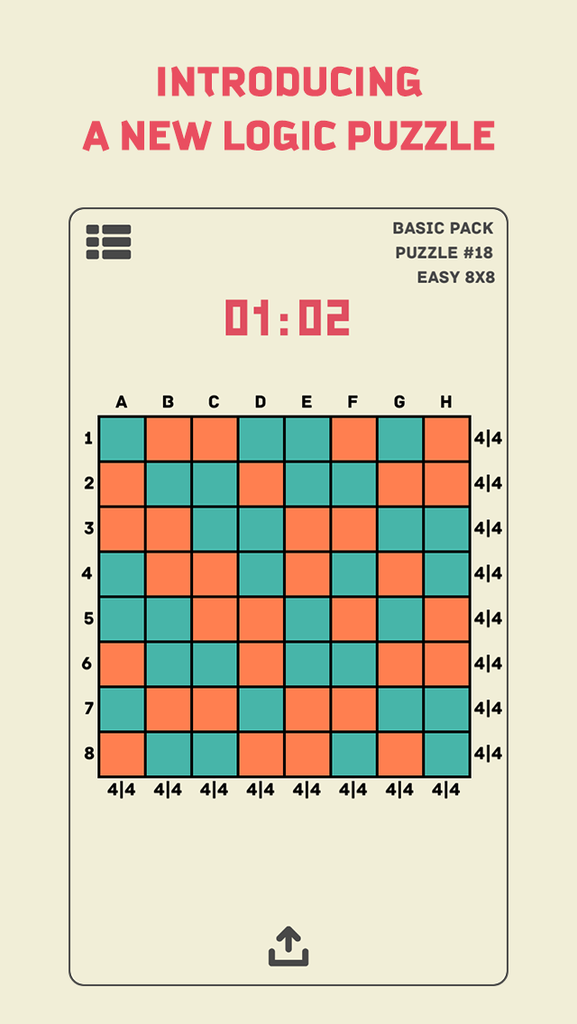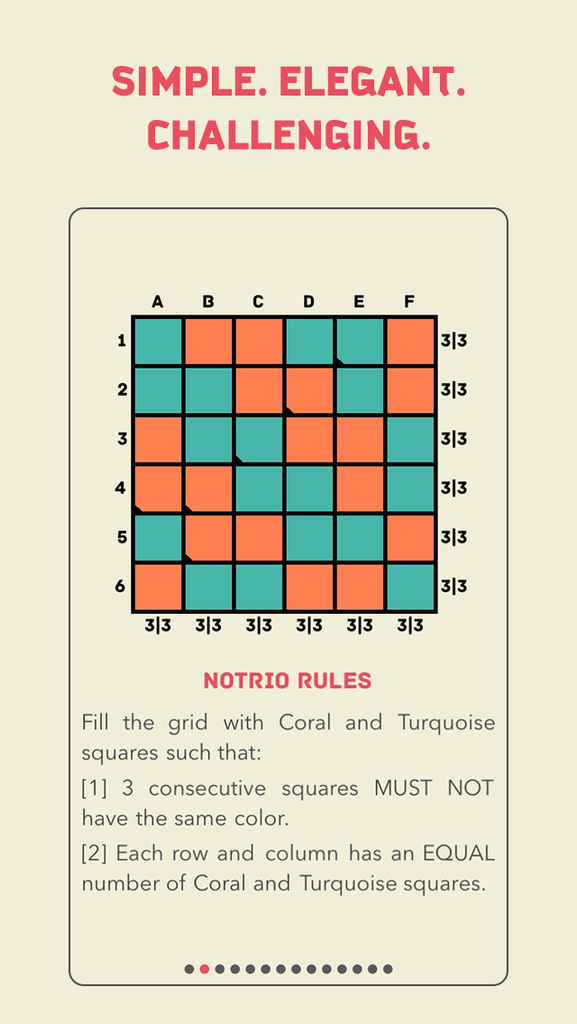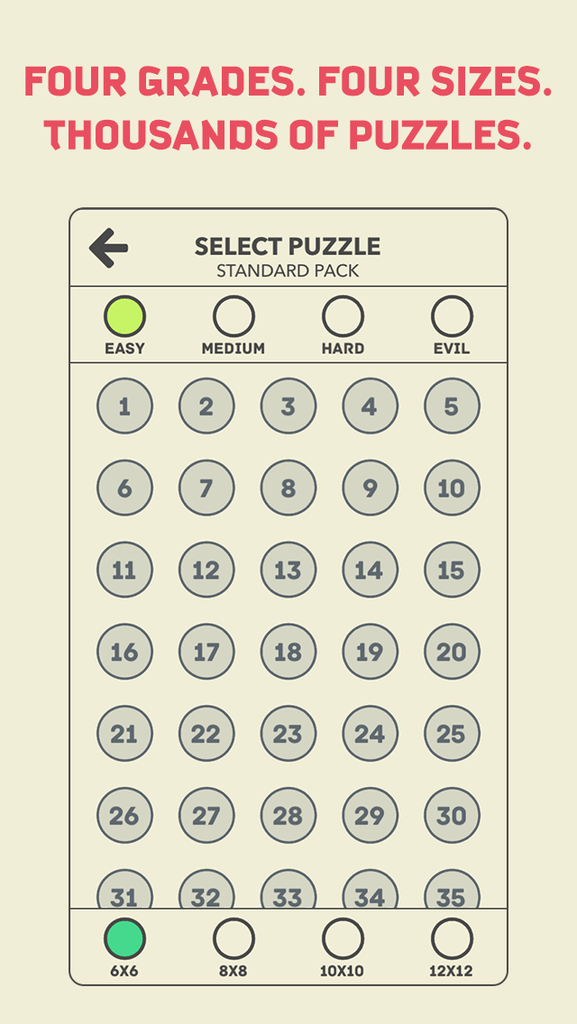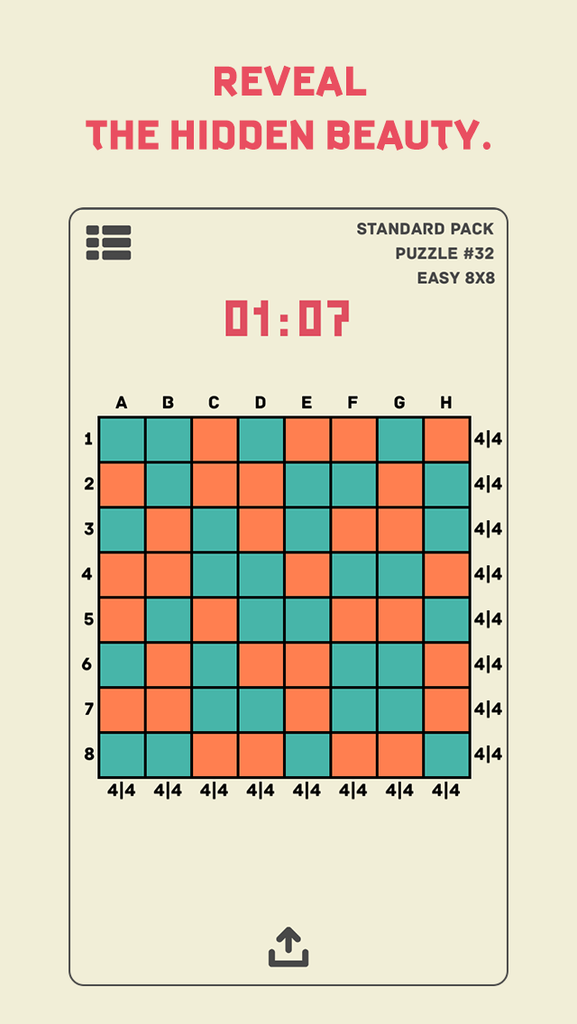Let me introduce Notrio, a new kind of logic puzzle. While belonging to the same category as Sudoku, Notrio has different rules which are simple and elegant, and thus requires completely different techniques to solve. If you want a fresh taste of logic puzzle after Sudoku, and a new challenge for your mind, Notrio is the perfect game for you!
[Notrio rules]
Fill a square grid (size 6x6 to 12x12) with Coral and Turquoise squares such that:
[1] Three consecutive squares MUST NOT have the same color, and
[2] Each row and column has an EQUAL number of Coral and Turquoise squares.
[Screenshots]





Download now for FREE:
iOS: https://itunes.apple.com/us/app/id1007923505
Android: https://play.google.com/store/apps/deta ... booraft.ct
Thanks for reading!

